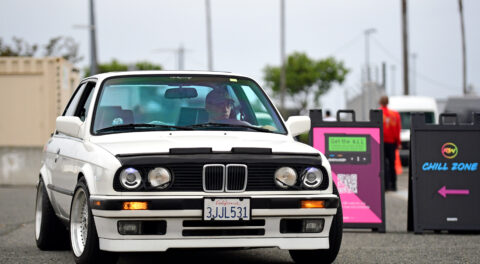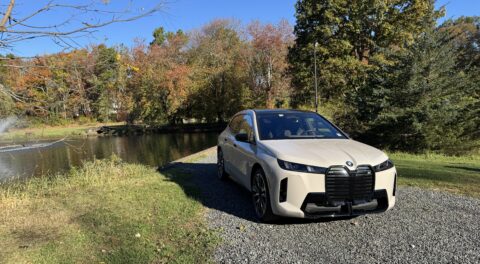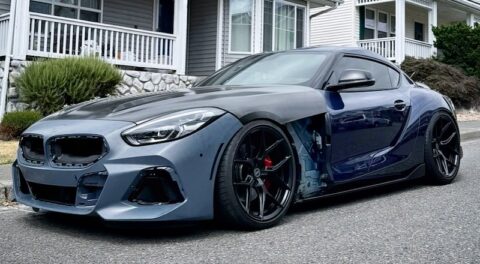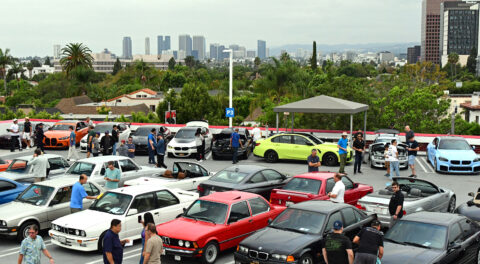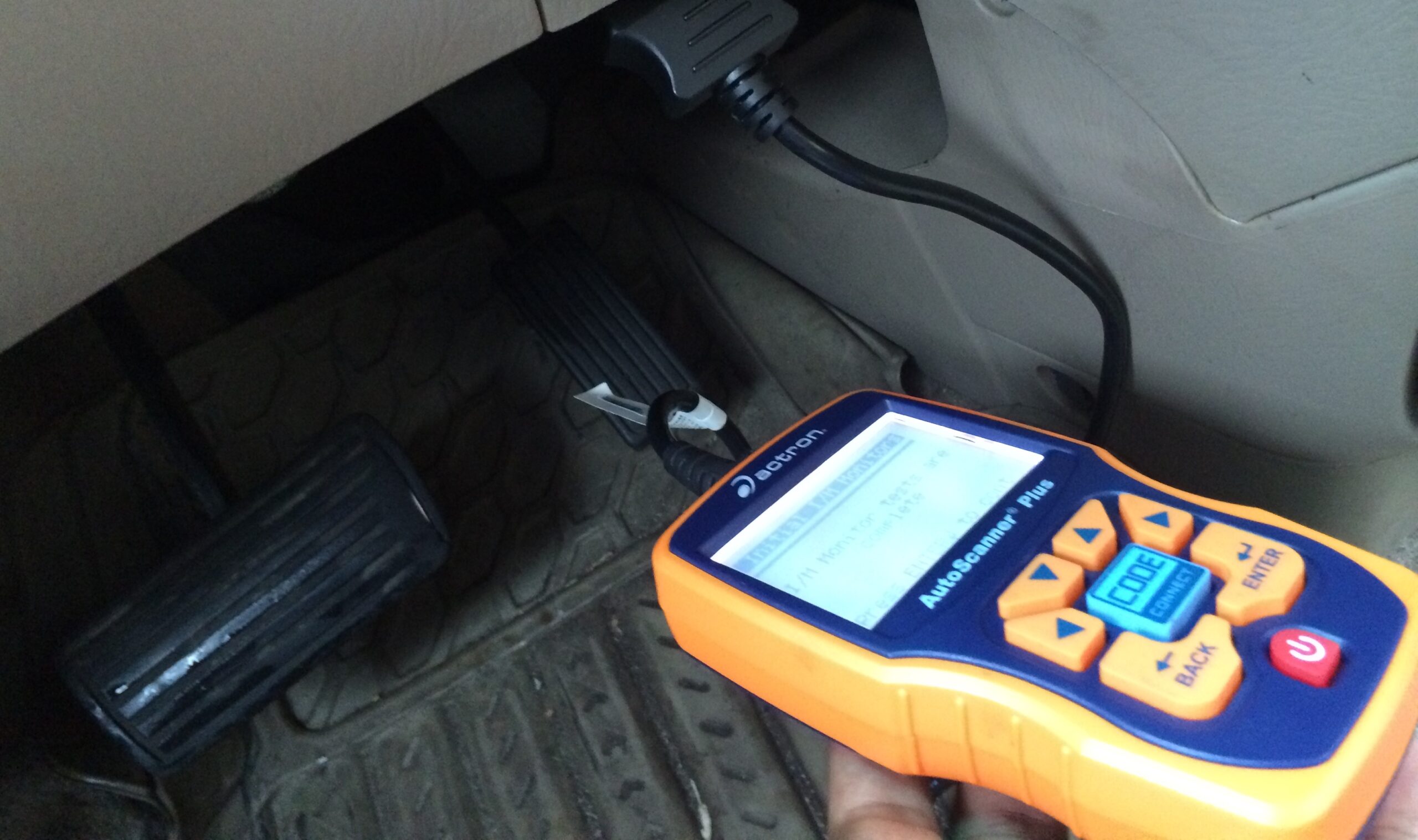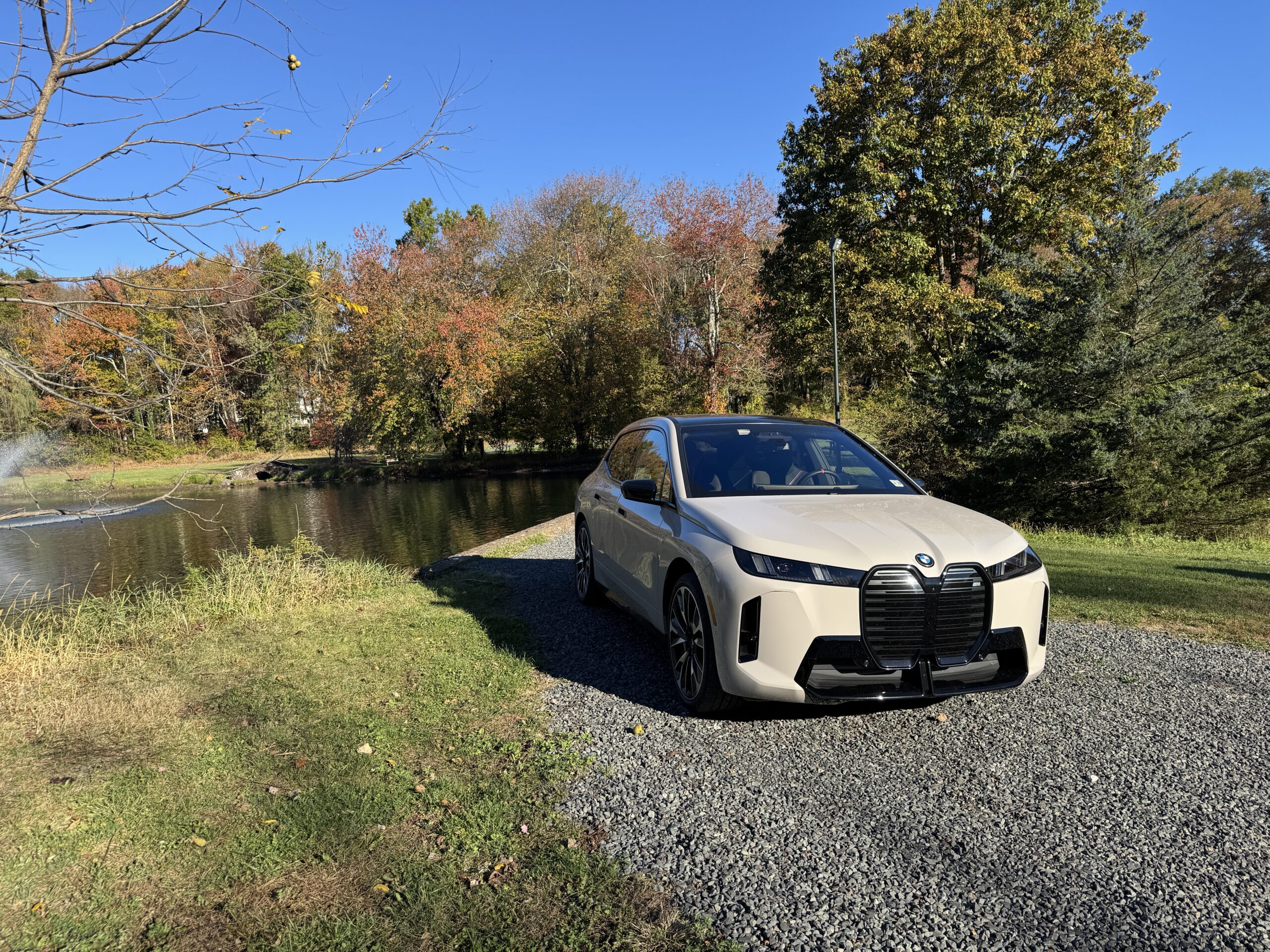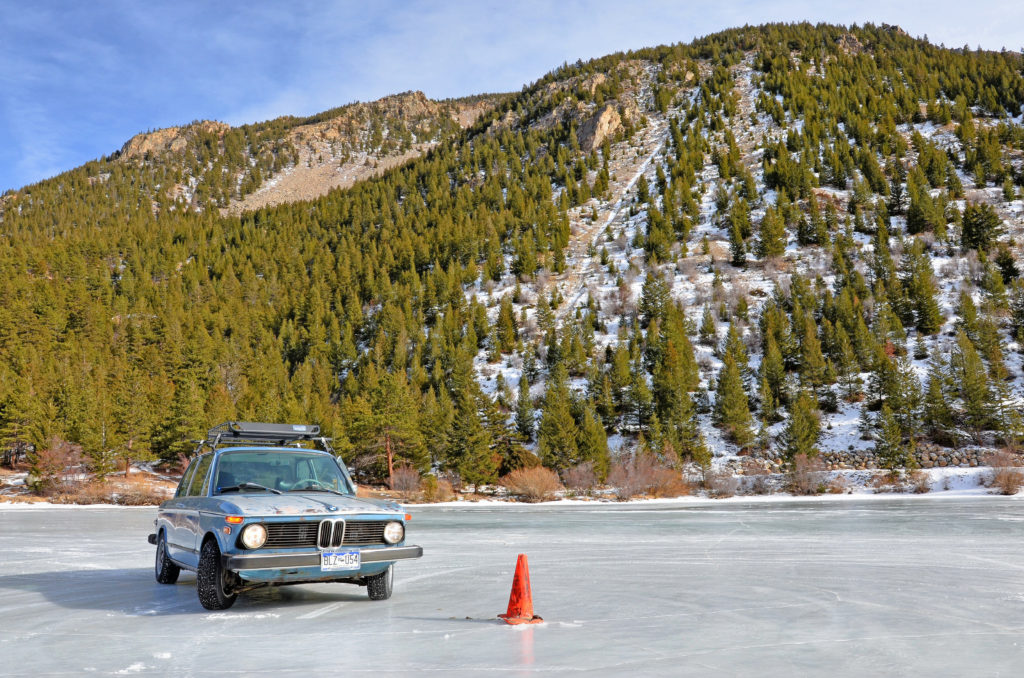
The premier winter event on the Rocky Mountain Chapter’s calendar—the Ice Gymkhana—took place on Georgetown Lake last weekend, and as usual, it was a blast! No really, it was literally a blast, thanks to hurricane-force winds of over 70 mph associated with a strong storm that hit the Colorado high country on the Friday night before the event.
By Saturday, those winds had died down some, but they did make for an interesting drive the night before. Rather than sit in snowstorm-Friday ski traffic on I-70, I decided to wait until the late hours of the evening for the traffic to thin out a bit. This gave me time to solve a small problem: find a car to drive! In what I’ll save for another story, I’d recently sold my beloved 1989 325iX sedan, which left me without a snow car.
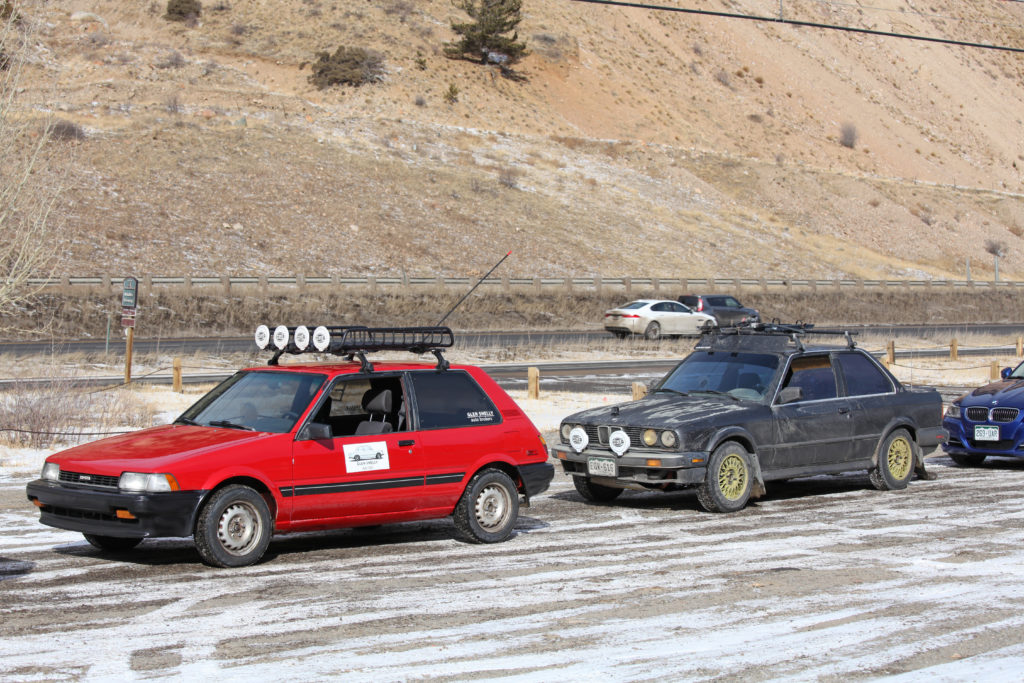
Having sold my BMW E30 325iX, I found the Toyota Corolla FX16 the next-best thing.
The next-best car in my quiver was the beater 1987 Toyota Corolla FX16. In the annals of rally, snow, and ice racing, the Toyota Corolla isn’t the first marque and model that comes to mind, but the late-’80s FX16 isn’t your little sister’s Corolla, either. At its heart is the same high-revving 1.6-liter twin-cam 4AGE engine shared with the first-generation Toyota MR2. Unlike in the MR2, the FX16 is front-wheel drive and has a limited-slip differential, but most important, it is light—very light—and lightness is key on the ice.
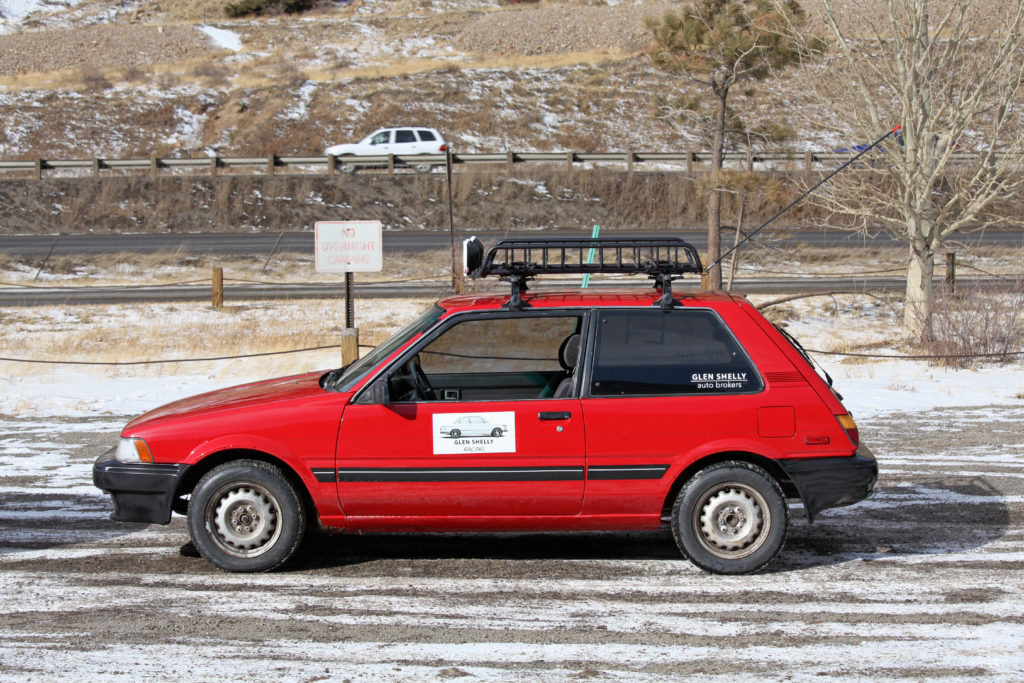
The Toyota Corolla FX16 is kitted out for ice racing.
All that it needed to race were tires, a problem remedied by a last-minute call to the local tire shop: presto-change-o, some off-brand studded rubber mounted on a spare set of steel wheels. To finish the look I plastered the same stickers and mounted the roof rack that the 325iX sported last year, because as the British say, if it looks like it will fly, it will fly. (In reality, adding more drag to the brick-like aerodynamics of the FX16 was a terrible idea, making the climb up I-70 in near-hurricane-force headwinds a redline-in-third-gear affair. Sleep came easy after I arrived at the roadside motel in the wee hours of the morning—beaten, bruised, and with ears ringing. Let’s just say that the FX16 is no BMW.)
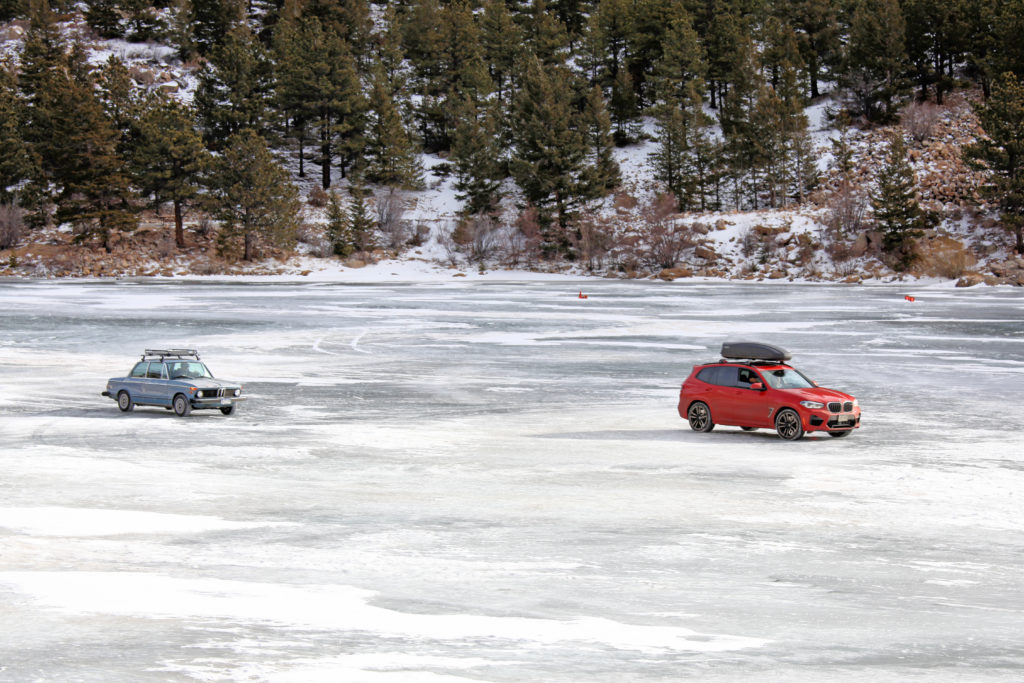
The oldest and newest BMWs on the ice: a 1975 2002 chases a 2020 X3 M40i.
The Ice Gymkhana starts with a drivers’ meeting and breakfast at the Alpine Café, where the brothers Tim, Ted, and Tom Schultz and Paul “Papa” Schultz, along with several dedicated volunteers who have hosted the event for decades, briefed us on the safety rules and the course. The latter was made up of a start gate followed by a long slalom, fast sweepers, a 360-degree turn around three cones, and a stop box. BMWs of all generations and types were in attendance, ranging from a 2020 BMW X3 M40i to a 1975 BMW 2002. Classes were broken down between studded and non-studded tires and two- and four-wheel-drive cars. In the Ice Gymkhana, the morning includes practice runs, followed by three timed runs in the afternoon. You are scored on your best timed run, with swag prizes donated by Schomp BMW.
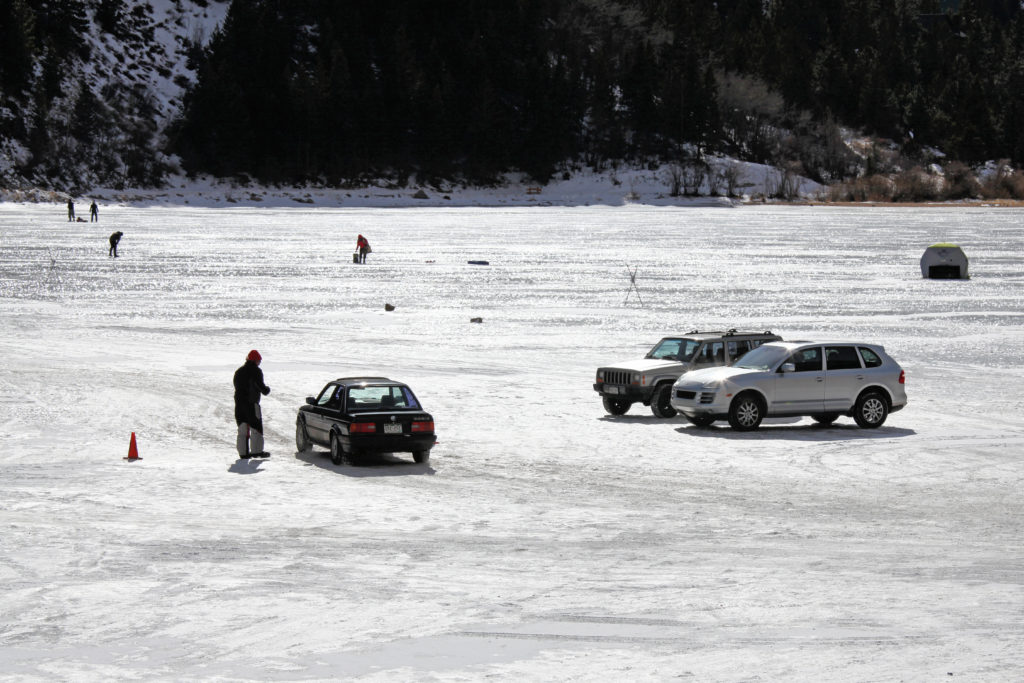
The start gate.
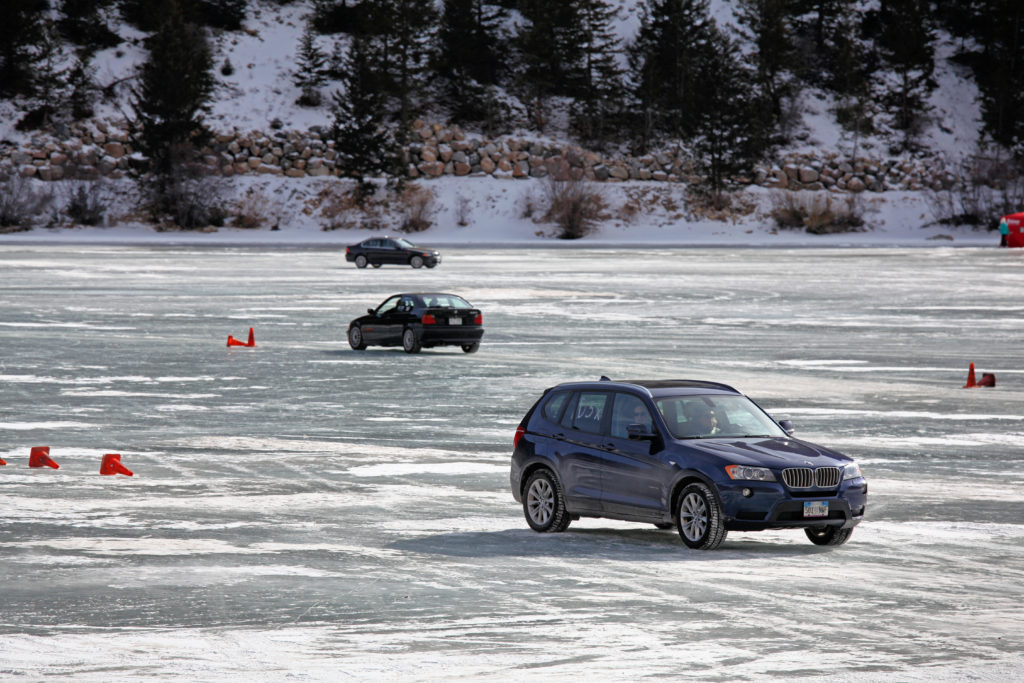
The lake surface was more ice than snow.
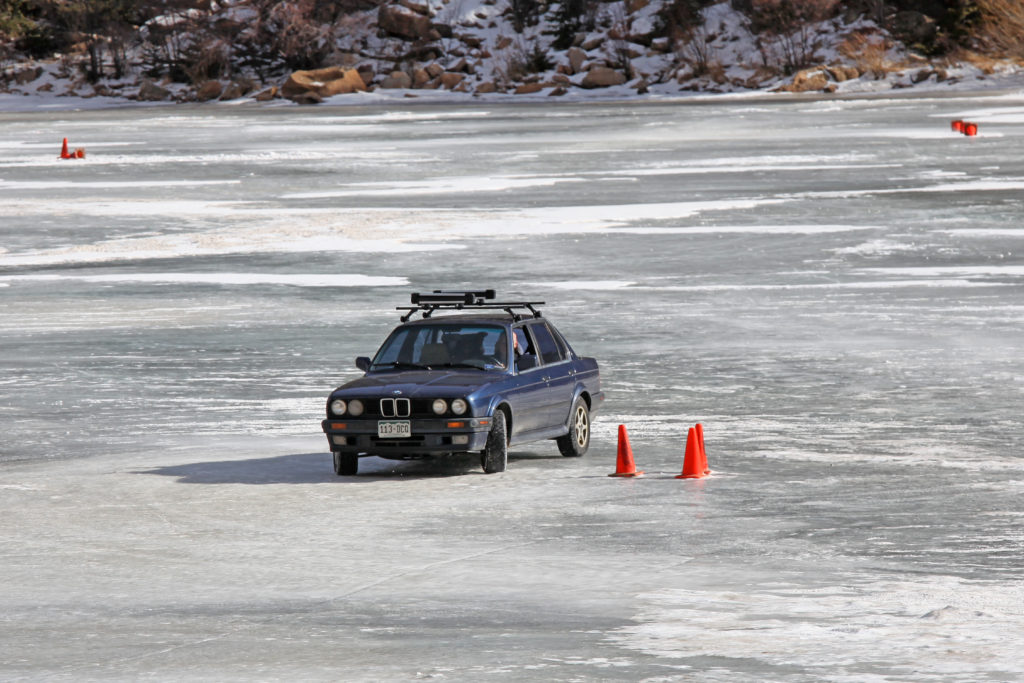
The 360-degree turn around three cones was the hardest challenge of the course.
Despite popular marketing trends, the ice is a great equalizer, favoring simple and light vehicles—and most importantly, studded tires. The winds had blown most of the snow off of the lake surface, leaving only small patches in spots. The snow patches had exponentially more grip than the ice did, so connecting the dots between the areas of grip in favor a true autocross line was key for a fast time. The slalom was reasonably grippy, as were the back sweepers, but the 360 around the cones was as slippery as ball bearings on a glass coffee table; an agonizing amount of patience was necessary to enter slowly and drift the tightest arc to keep the circumference small. At the end of the course was a stop box with time penalties for those who failed to come to rest within the cones.
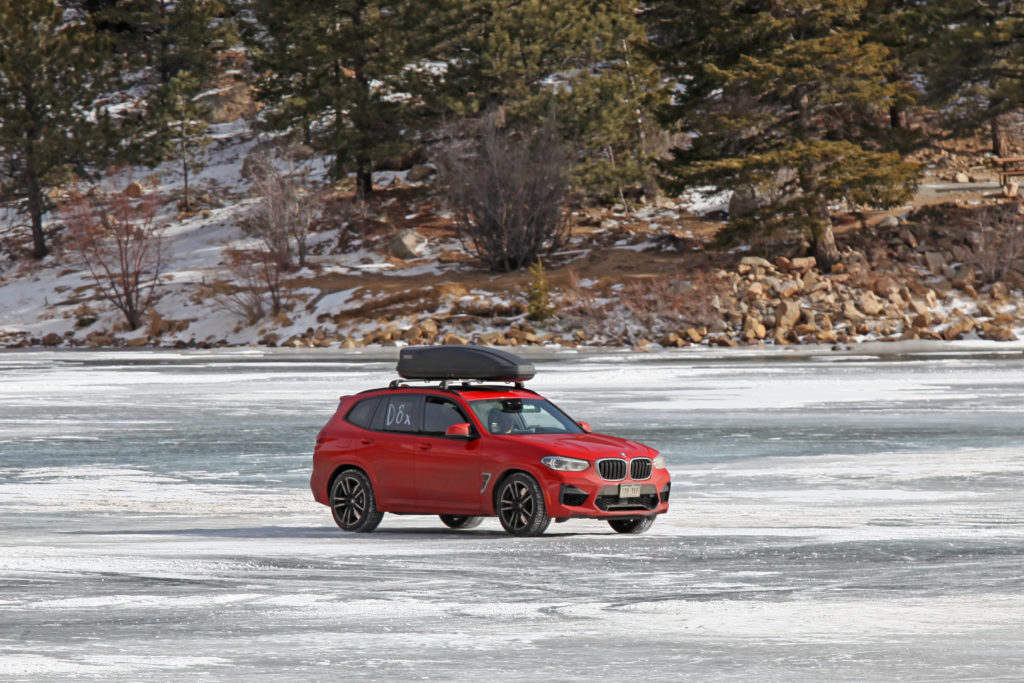
The newer BMWs in attendance were a 2020 X3 M40i, a 2018 435Xi Gran Coupé, and a 2016 M3.
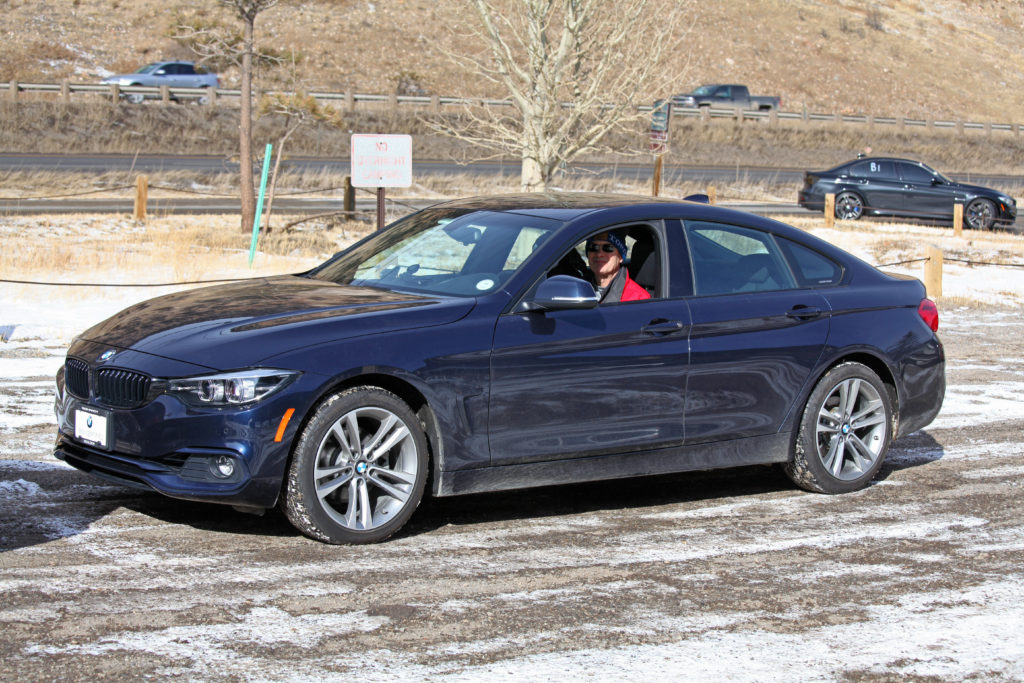
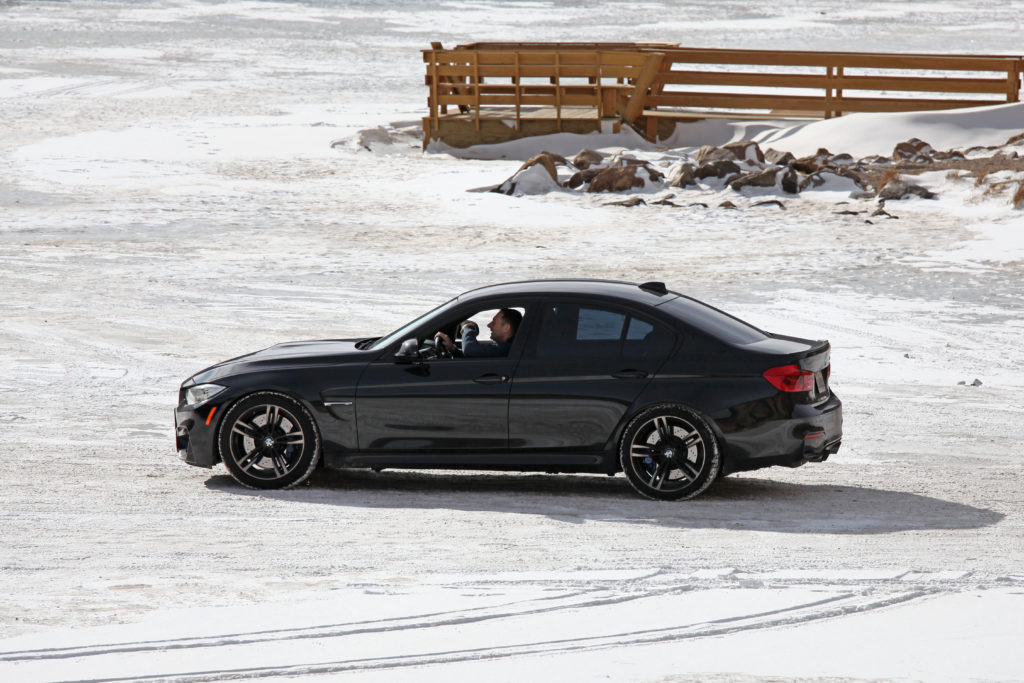
Sizing up my competition, I calculated that the FX16 wouldn’t hold a candle to Marc Swanson’s E30 325iX wearing studded snow tires, but of the lighter cars, I might edge out the remaining E30 325iX’s and a sole E46 330Xi. My closest match was probably Blake Borchardt’s Pastel Blue 1975 2002 shod with studded snow tires; it was slightly heavier than the FX16, but had proper BMW manners, and after watching a few practice runs, I knew it was well driven with Blake at the helm.
While they were not as fast, it was enjoyable to watch the newer BMWs duke it out on the ice. Some notable examples were Brice Kliewer’s Toronto Red 2020 X3 M40i, Michael Schmidt’s sinister black 2016 M3, and Don Rocca’s 2018 430xi Grand Coupé. Up-country German examples from Wolfsburg were a 2019 Volkswagen Alltrack wagon (thank you, Volkswagen, for keeping the wagon faith) and a 2018 Volkswagen Golf R (reminding me that it’s a shame that BMW doesn’t offer the U.S. market its hot-hatch examples).

“That’s why we don’t have front-wheel drives”—a BMW ad circa the old-school.
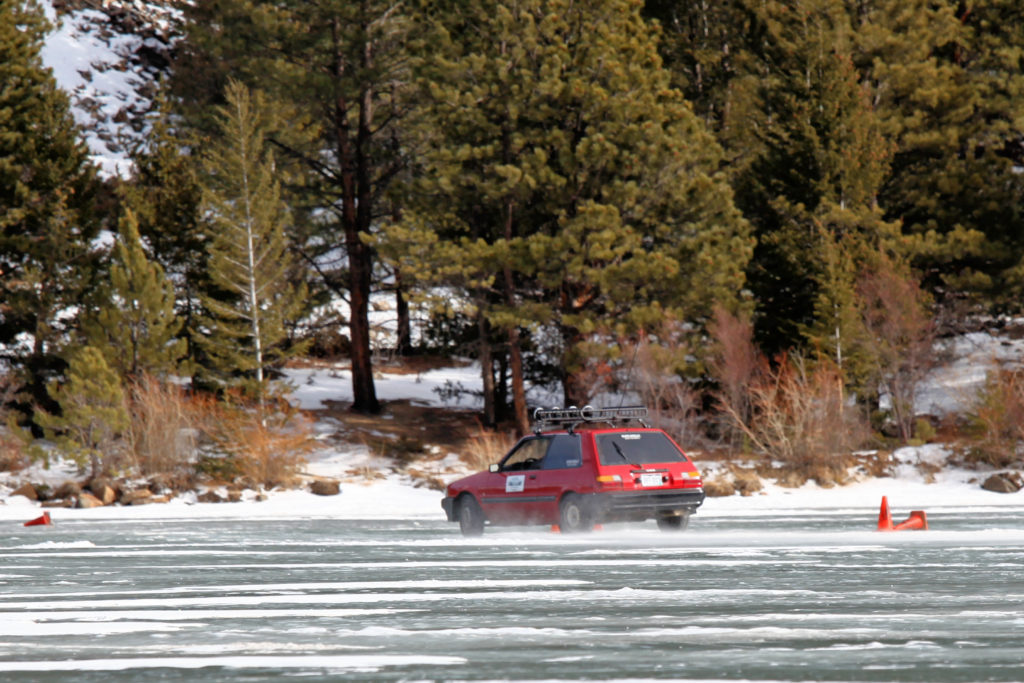
The FX16 claws its way through the course.
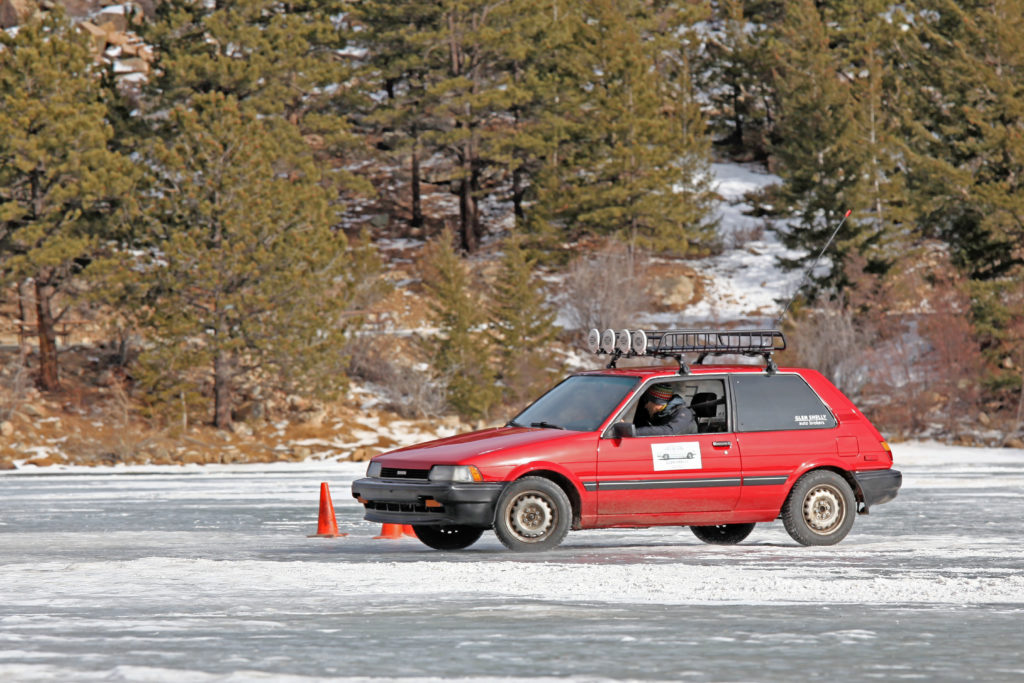
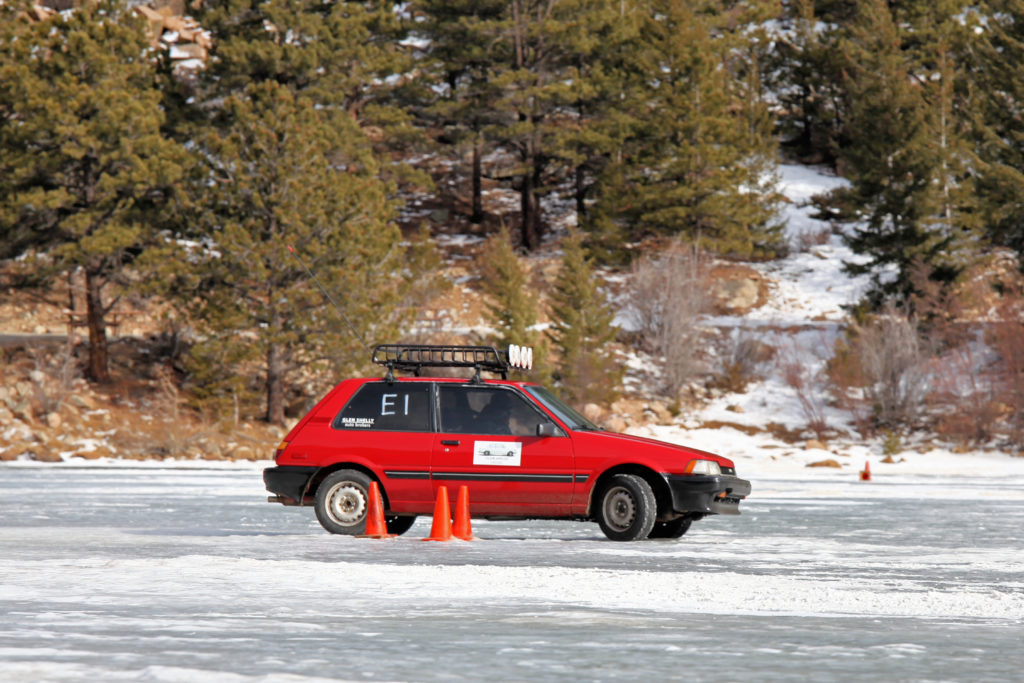
When the timed runs started, the FX16 required a nuanced and vastly different approach than my normal rear-wheel-biased BMW driving style. Tires do not like to multi-task, and asking only two of them to accelerate, turn, and do the majority of braking on ice required a turtle’s patience at times. Limiting wheelspin on acceleration and slowing for turn-in were no different, but lifting to sharpen mid-corner and hook up on corner exit were highly counterintuitive, coming from a rear-wheel-drive background.
Areas where the FX16 did shine were quick direction changes on the snow patches, thanks to the front drive wheels contacting the snow sooner, and a drama-free turn radius around the 360-degree cone, aided by a quick flick of e-brake on entry. To keep the radius tight, I did it so slowly that I literally stalled in first gear on one run—which also produced my fastest time! The BMW driver in me was highly unsatisfied, but the competitor in me felt like I put up a good showing. Watching Blake Borchardt cleanly massage his 1975 2002 around the course, it was anybody’s guess who the faster of the two.
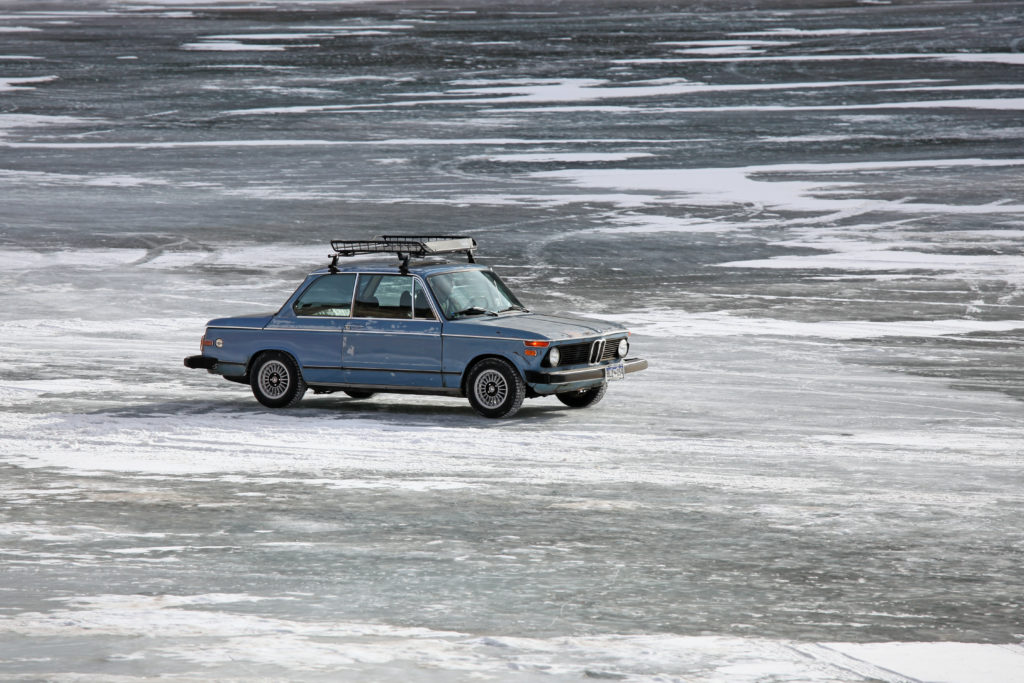
Blake Borchardt’s 1975 2002 in hot pursuit.
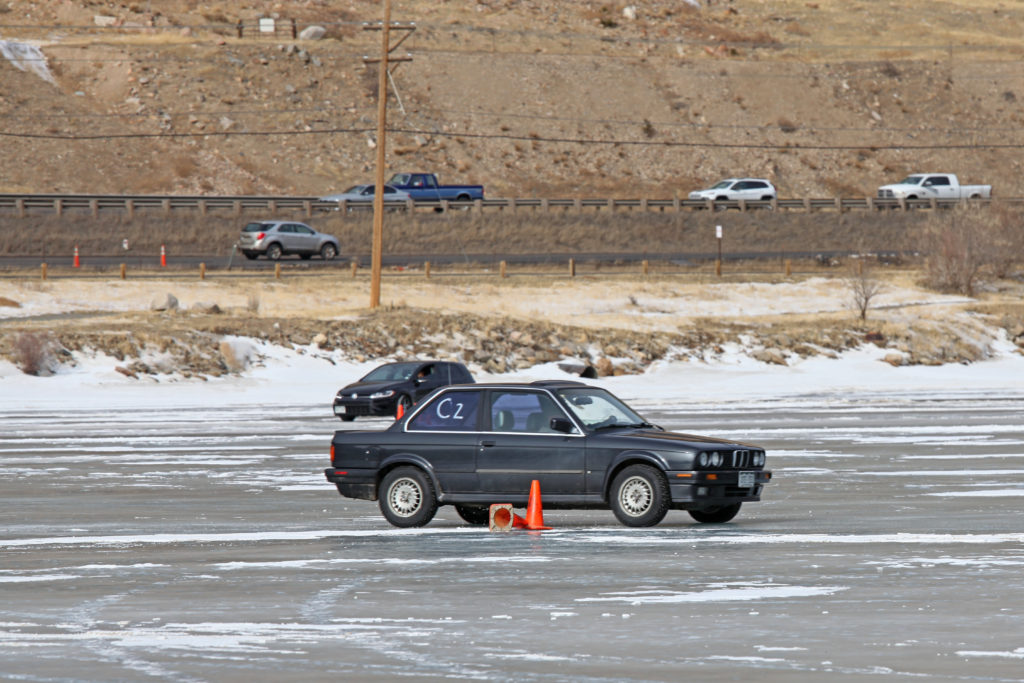
Marc Swanson won the day in his 1989 325iX.
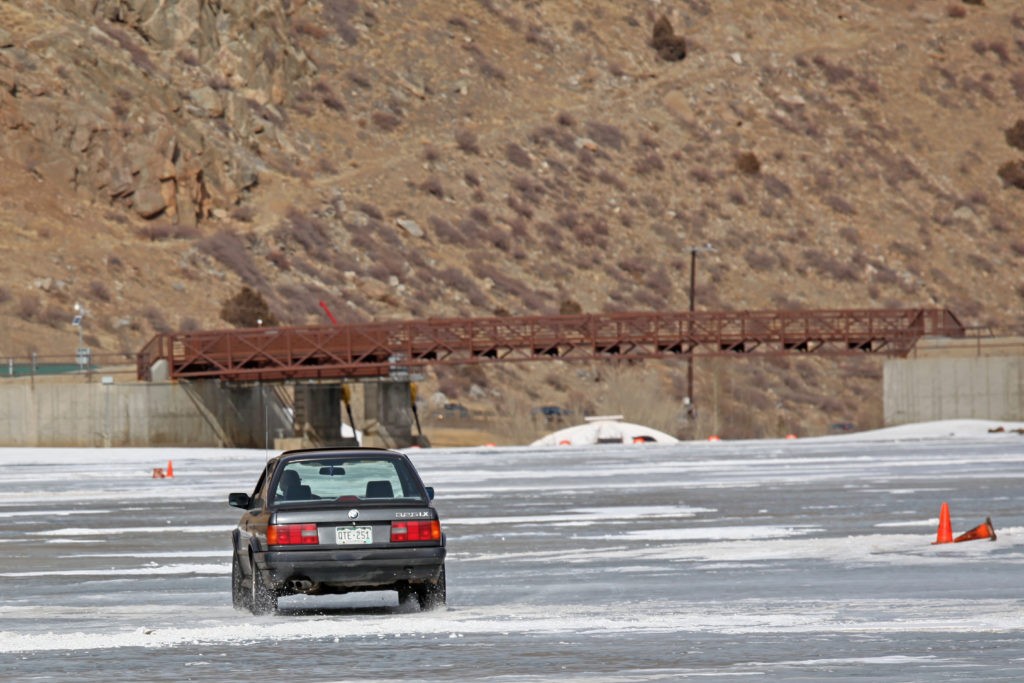
When the results came in, Marc Swanson had dominated the day with a fastest time of 1:19.77 in his studded-tire 1989 325iX. I edged out Blake Borchardt by a nail-biting 0.4 of a second with a 1:38.49 to his 1:38.86, good for second and third place overall.
Co-driving another 1989 325iX, Christopher Blair and Catherine Downward rounded out the AWD studded-tire class with 1:49.07 and 1:55.26. Cory Rowan got the fastest non-studded AWD time in his VW Alltrack wagon with a 1:48.50, followed by Jon Bower in his 1991 325iX with a 1:51.84 and Steven Moody in his 2013 X3 with a 2:05.12.
The fastest 2WD non-studded time also went to the youngest driver in attendance, Timber Gulkin, in his 1996 BMW 318ti with a 2:26.43. In the end, great fun was had by all as we enjoyed our BMWs (and one vintage Toyota) on the icy lake during the motorsport doldrums of winter. Many thanks to the Schultz family, dedicated volunteers, and wheel-spinning participants for another fantastic Ice Gymkhana!—Alex McCulloch
[Photos courtesy of Blake Borchardt and Alex McCulloch.]

